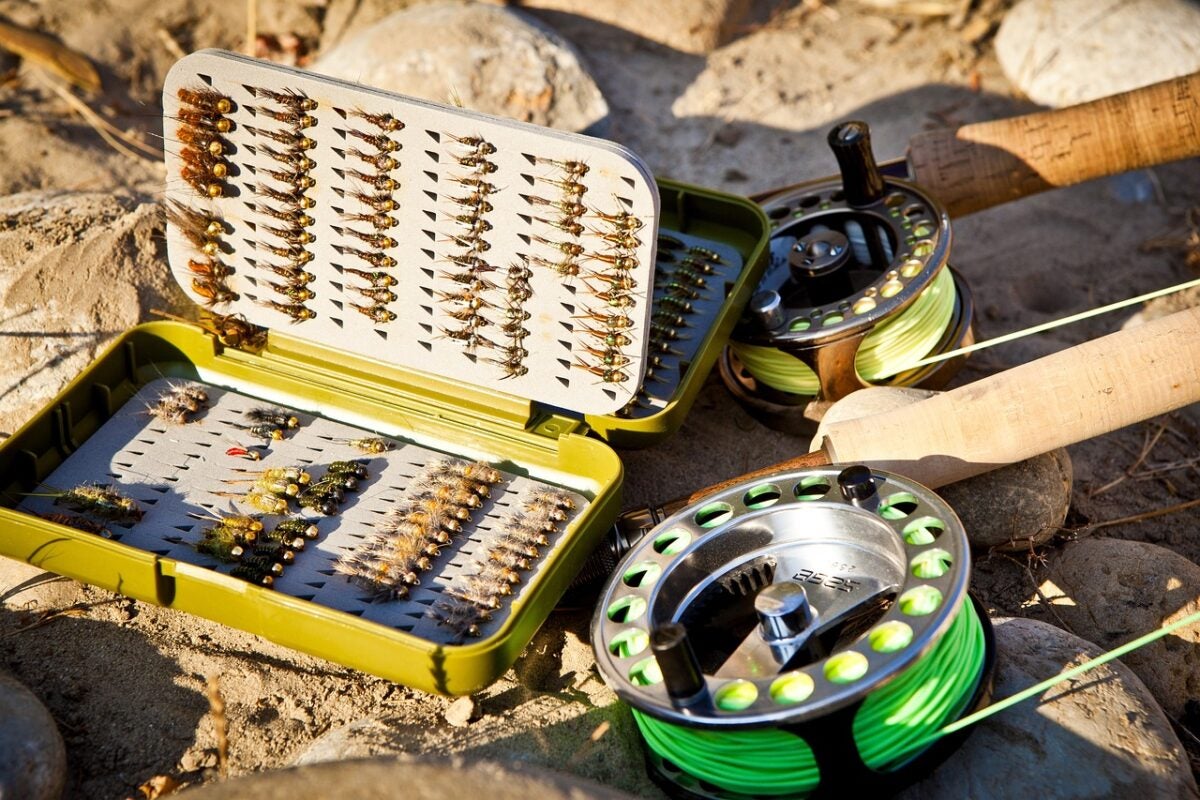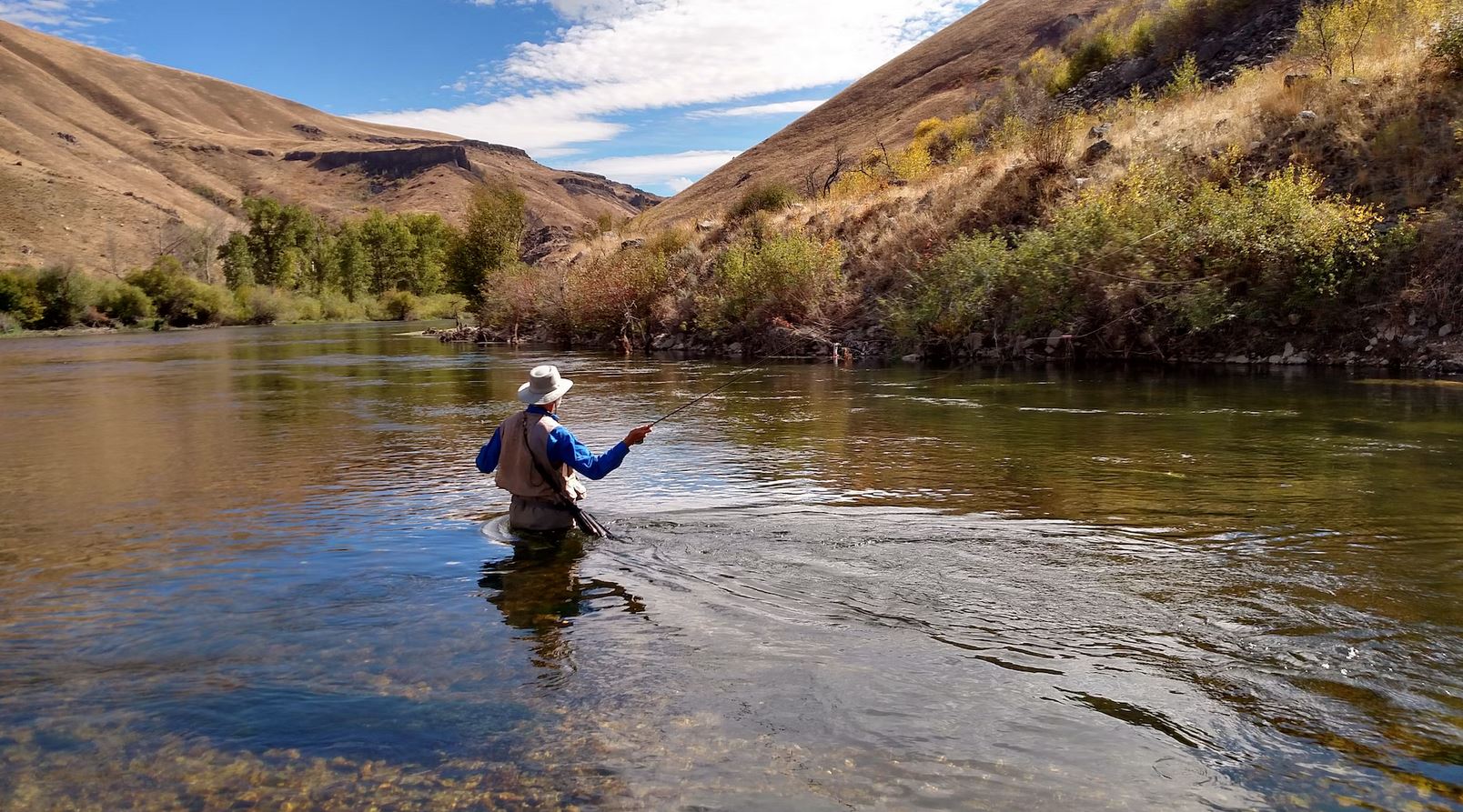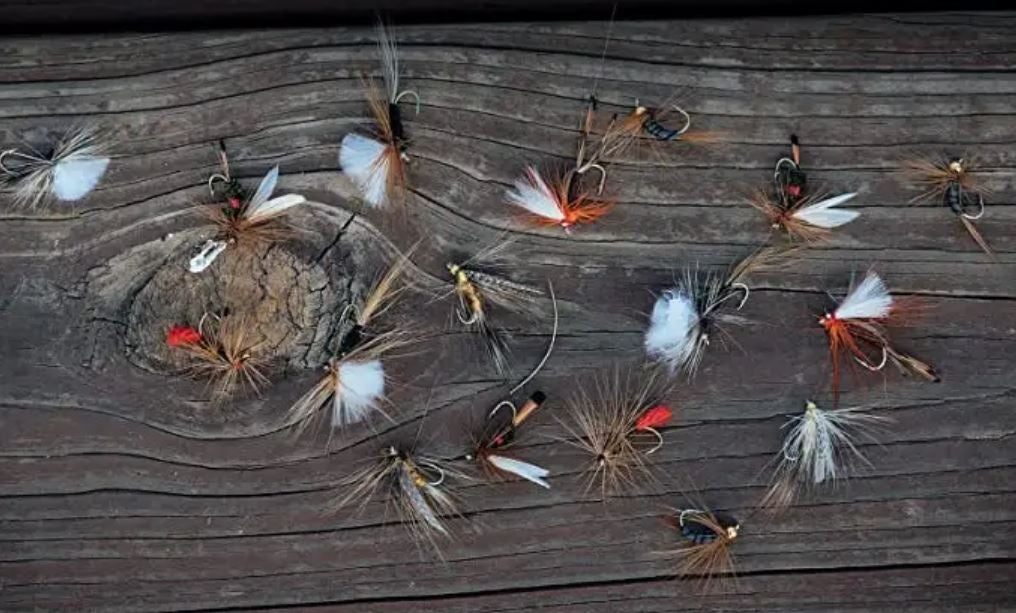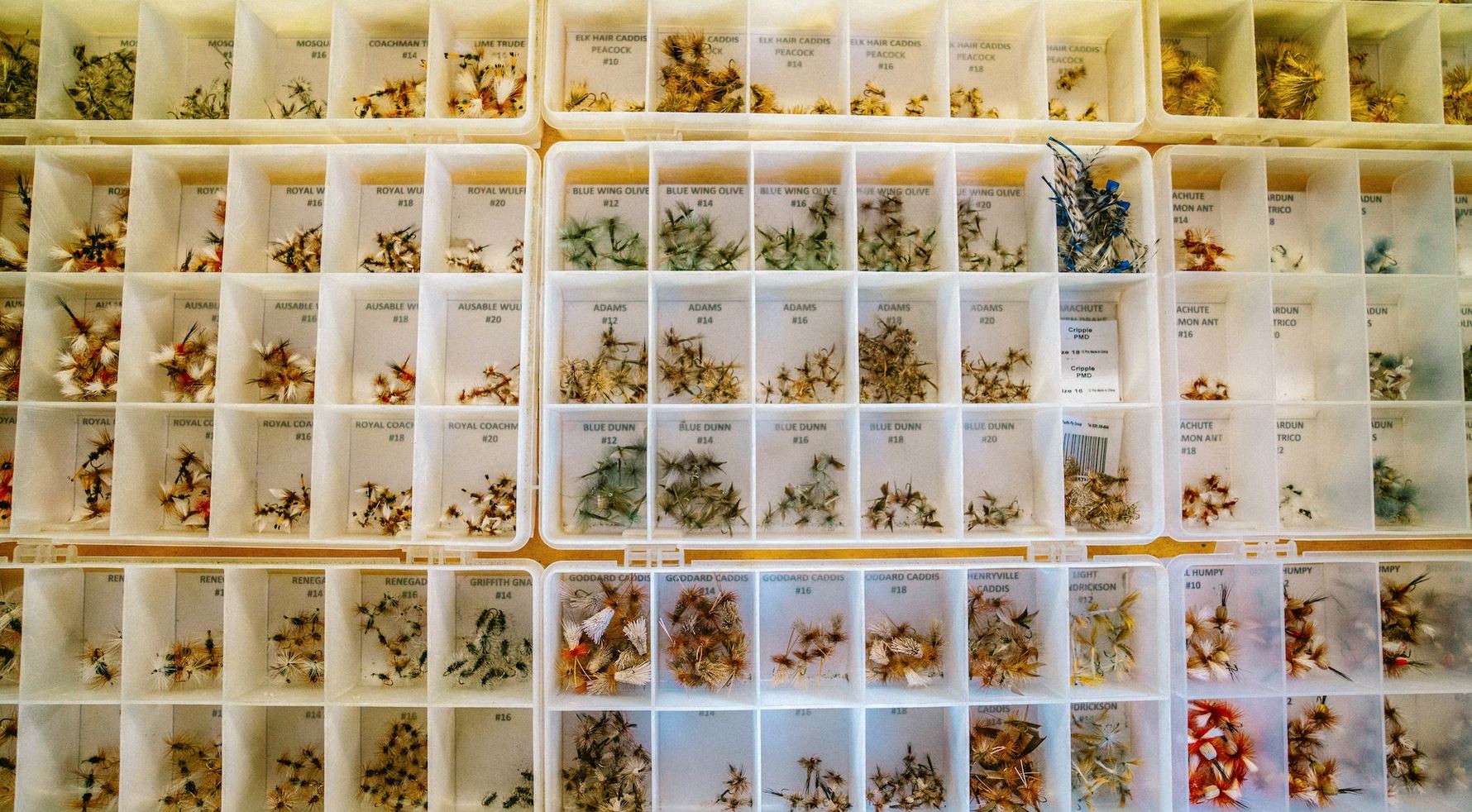Fly Fishing Lures – How to Pick the Right Flies to Land More Fish
Travis Olander 06.16.23

In our beginner guide to Fly Fishing, we talked briefly about “matching the hatch.” That means picking fly fishing lures that properly mimics the prey your target fish are after. Successful fly fishing matters more on presentation and mimicry than regular ole’ angling. So, making sure you’ve got the right fly, midge, or other critter based on the local water is critical.
Fly Fishing Lures – How to Pick The Right Fly Lure
When it comes to snagging a carnivorous fish — like a trout, bass, or other common fly fishing target — you’ll find they’re sensitive to the behavior of the lure you’re using. A fish is less likely to break the surface of the water and take a bite out of a fly if the presentation feels or looks “off.” What does that mean, exactly? These are the factors that make or break a good lure presentation.
Fly Location
Dry flies are easy to use: They should rest atop the water. But wet flies and other near-surface lures need to be placed in the right spot in the water column. A small nymph, for example, rests about 6″ to 12″ from the bottom — it would make little sense to keep that small lure near the surface.
But a large midge mimicking an emerging fly tends to rest in the middle and upper parts of the water column. That means you might need to use some split shot to get a small nymph lure to the proper depth. It’s these small details that inform proper lure placement, and they make or break a good presentation.
Seasonality
It won’t make much sense to fish a large dry fly in winter, because that type of prey simply isn’t around for fish to eat during cold months. Cold weather means sticking with smaller lures and wet flies, while the late spring and summer months are when you can pull out some large dry flies.
As a general rule of thumb, you should stick with the following fly sizes based on the time of year (the smaller the number, larger the lure):
- Spring: Size 12 to 16
- Summer Under size 16
- Fall: Size 12 to 16
- Winter: 18 to 28
Also consider the approximate hatch times:
- Midges: Year-Round
- Mayfly: March to September
- Caddis: May to September
- Stonefly: February, March, May to August
- Terrestrial: May to September
- Eggs: February to April, September to November
- Worms: February to November
Temperature
When it comes to successful fly fishing, you need to beat the heat. Fish simply don’t like to strike when the water’s above 67 to 68 degrees (F), When you’re getting close to those temperatures, it’s best to stick with a larger lure and bigger tippet to reduce strike times.
Water Clarity
Carnivorous fish have tremendous eyesight, and clear, bright waters can easily give up the presence of your tippet. That means you should stick with a smaller fly that can be managed with a thinner, less visible tippet. The inverse is also true: Turbid, cloudy water might demand a larger fly with more action that’ll catch a fish’s attentive eyes. That also means getting away with a larger tippet.
It’s a good practice to use dark patterns with high contrast in murky water, and light flies when there’s good visibility.
Tippets vs. Fly Sizes
Like lure sizes, tippet sizes are inverse to the number: Larger numbers mean thinner line.
- 8x Tippet (0.003″) / Fly Sizes: 28, 26, 24, 22
- 7x Tippet (0.004″) / Fly Sizes: 24, 22, 20, 18
- 6x Tippet (0.005″) / Fly Sizes: 22, 20, 18, 16
- 5x Tippet (0.006″) / Fly Sizes: 18, 16, 14
- 4x Tippet (0.007″) / Fly Sizes: 16, 14, 12
- 3x Tippet (0.008″) / Fly Sizes: 10, 8, 4
- 2x Tippet (0.009″) / Fly Sizes: 8, 6, 4
- 1x Tippet (0.011″) / Fly Sizes: 4, 2, 1, 0
Fish vs. Fly Sizes
Species alone can dictate what tippet and fly to use. Here are some basic guidelines to improve your chances of success:
- Small Trout, Panfish: 8x Tippet, 20 to 28 Fly
- Spooked/Stress Trouth: 7x Tippet, 18 to 24 Fly
- 10″ to 12″ Trout: 6x Tippet, 16, to 22 Fly
- 13″ to 20″ Trout: 5x/4x Tippet, 12 to 18 Fly
- 20″+ Trout, Small Bass: 3x Tippet, 8 to 12 Fly
- Bass, Steelhead: 2x Tippet, 4 to 10 Fly
- Steelhead, Salmon: 1x Tippet, 2 to 6 Fly
- Saltwater Game: 0x Tippet, 0 to 4 Fly
Water Level
Another general rule of thumb is: The deeper the water, the larger the lure. Shallow waters mean fish are more likely to hide in pools and among brush — both conditions that demand small lures and topwater flies. As the water depth decreases, the average water temperature also rises. That means fish are less likely to strike, and will instead rest. That means presenting smaller, easier, less stressful prey.
Setting The Menu
The best thing you can do to ensure success with every fly fishing expedition is to bring a loaded box of tackle with all sorts of lures. The below setup can be used for beginners — or maybe it’ll spark an idea and send on the hunt for a lure you might’ve missed.
- Nymphs Size 16 to 22. The classic Pheasant Tail and Hare’s Ear provides plenty of enticement. Stick to options that are black, brown, olive, and deep red.
- Dry Flies Size 12 to 22. Think of the Elk Caddis, Parachute Adams, and Royal Wulff. Focus on black, olive, and brown.
- Streamers Size 4 to 6. A Wooly Bugger, Deep Minnow, and Muddler Minnow can round out the box for large, active trout and deep water targets.
- Wet Flies Size 4 to 10. These are great for spring and early summer. Look for some egg and leech patterns, and find a good beadhead with some flash.


